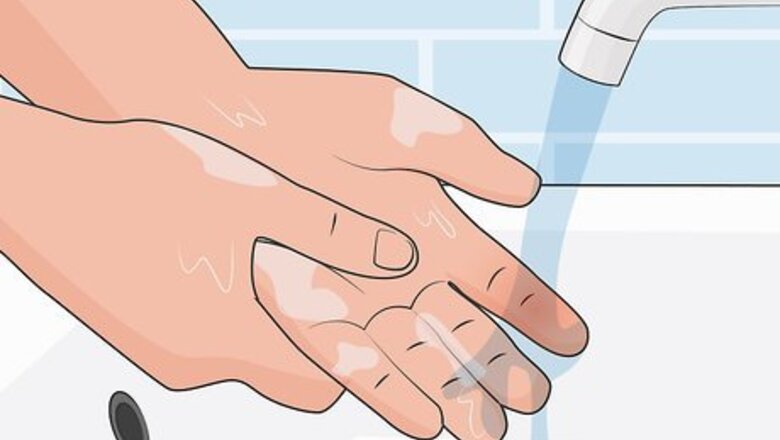
views
X
Trustworthy Source
World Health Organization
Health information and news provided by the World Health Organization
Go to source
To help them be more comfortable, ensure each child has a mask that fits them well. You can also help make mask-wearing more fun by letting kids pick out their own designs or decorations!
Putting on the Mask
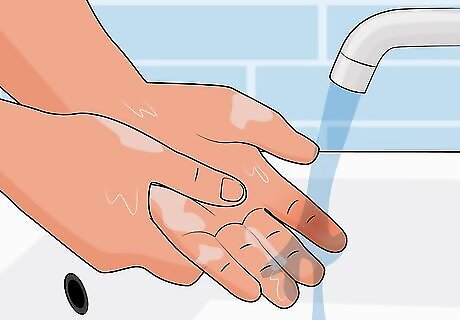
Wash your hands for 20 seconds before you touch the mask. If you've come into contact with any germs, you could spread them to your child unless you wash your hands before you handle their mask. Use soap and warm water, and be sure to wash the palms of your hands, between your fingers, under your fingernails, the backs of your hands, and around your thumbs. If you don't have any soap and water available, use an alcohol-based hand sanitizer, instead.
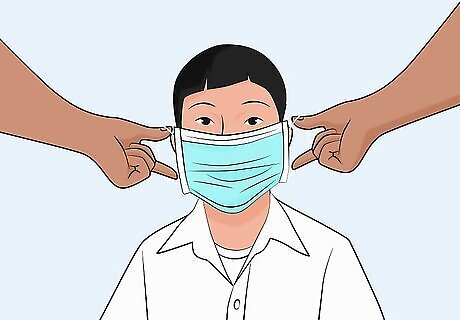
Place the front of the mask loosely over your child's nose and mouth. Open the mask so it's flat, being sure to hold it only by the straps or ties. Arrange the mask so the top sits at the bridge of your child's nose and the bottom covers their chin. Make sure the mask covers your child's mouth and nose completely. It's important to use an appropriately-sized mask for each child. If the mask is too small, it won't be comfortable, and may not cover your child's entire nose and mouth area. If it's too big, it will leave gaps that make the mask ineffective. Ask your child if they're able to breathe comfortably.

Bend the nose band if the mask has one. Some masks have a moldable wire piece along the nose portion. If your child's mask has one of these, gently pinch the wire to bend it to the shape of your child's nose. These types of masks may offer a more secure fit than masks that do not have a nose piece.
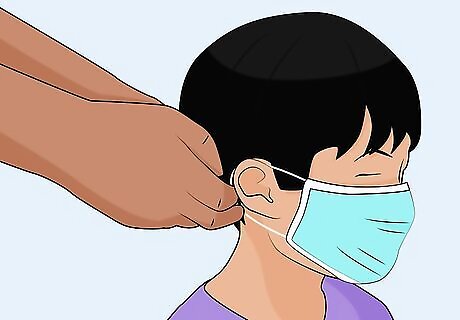
Place the straps behind your child's ears if the mask has loops. Many cloth and disposable masks are made with 2 looped straps. Once the mask is in place, simply slip those loops behind your child's ears. If the mask is too big, try tying loops in the ear straps for a quick fix. Just make a tiny knot right at the end of the ear loop to shorten the strap. This is a great option when you're on-the-go and using disposable masks. Add an ear saver or mask adjuster if the straps irritate the backs of your child's ears. This is often a small strip of fabric with large buttons that the straps can loop behind, although there are acrylic versions as well. You could also sew buttons onto a hat or headband for a stylish way to adjust the fit and keep straps off of kids' ears.
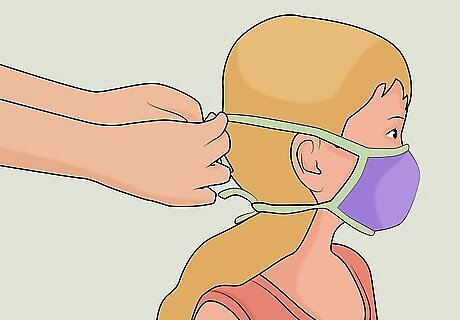
Tie the straps if they go behind your child's head. If you're using a mask that ties behind the head, tie each set with a simple bow, the way you'd tie your shoelaces. Tie the first set of straps so they go above your child's ears, and bring the second set around the back of their head below their ears. These types of masks are less likely to irritate your child's ears, but they're not as easy to take on and off quickly.
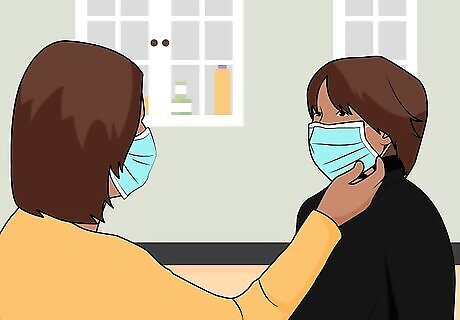
Check the fit of the mask after you put it on. Once you've tied the straps or secured the ear loops, make sure there are no gaps on the sides of the mask. You might also check around the bridge of your child's nose and along their chin. If there are any areas that gap open, adjust the straps until the mask sits snugly against your child's face. If there are any gaps, the mask won't be effective at preventing the spread of germs. The fit should be snug, but not so tight as to be uncomfortable.
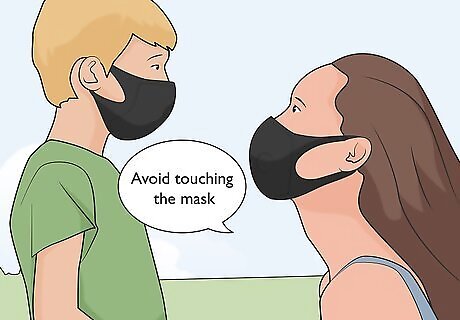
Remind your child about the importance of leaving their mask in place. When you put the mask on your child, it's a good idea to remind them to avoid touching the mask as much as possible. Tell them not to pull the mask down below their nose or up above their mouth, dangle it from one ear, or wear it on their forehead. In addition, remind them to wash their hands before and after they touch their mask. You know your child best, so use your best judgment on how often they need to be reminded. Smaller children might need to be reminded frequently while they're wearing the mask, while older children might just need a quick reminder when you first put the mask on.
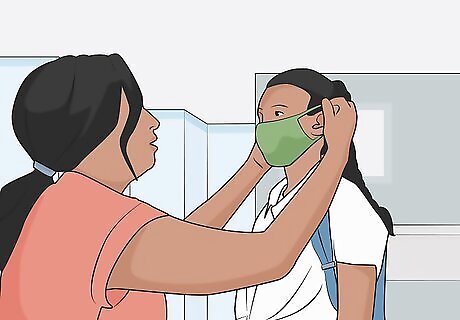
Change your child's mask if it gets wet or dirty. A contaminated mask won't do much to protect your child from illness, so be sure to have extras on hand if at all possible. If you notice that your child has been touching their mask, if they accidentally drop it on the floor, or if it gets wet, change it out for a fresh one. If you won't be around your child, like if they're going to school, send them with at least one extra mask if you're able, or ask whether there will be disposable masks available.
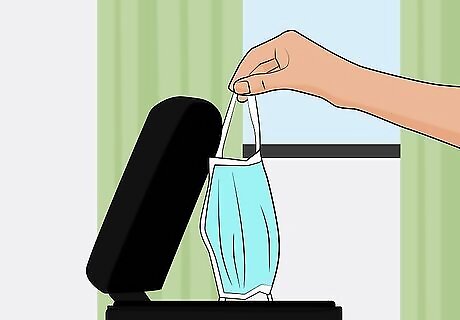
Remove the mask and wash or discard it after each outing. When you get home, wash your hands, then untie the mask or slide the loops off of your child's ears. Don't touch the portion that covers your child's mouth, or you could transfer germs to your hands. If your child had on a disposable mask, place it directly into the trash can. If it was a cloth mask, drop it straight into the washing machine. When you wash a cloth mask, be sure to use soap and hot water. Don't put your mask down on any surfaces in your house before you discard or clean it, or you could contaminate your home with germs.
Encouraging Your Child to Wear the Mask
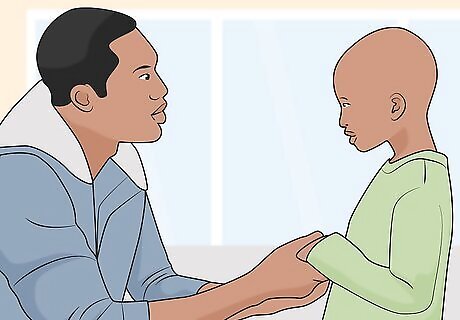
Use age-appropriate language to explain why wearing a mask is important. Kids are more likely to go along with something if they understand why you're asking them to do it. Stick to words and phrases you're sure your child can understand, and explain that wearing a mask will help protect against the spread of illness. For instance, if you have a younger child, you might say, "We wear a mask because it helps keep our family and neighbors healthy and safe!"
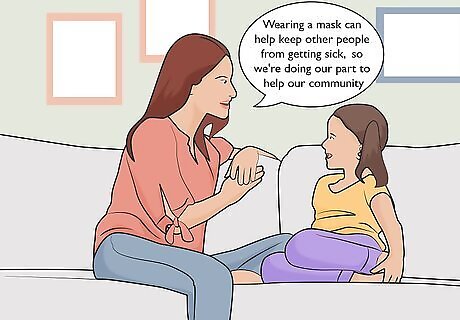
Try to have an upbeat, positive attitude about wearing masks. With kids, your demeanor can sometimes convey more than your words. If they overhear you saying that masks are inconvenient, uncomfortable, or ineffective, they might feel anxious about wearing them. Instead, try to help your child feel that wearing a mask isn't that big of a deal—it's just another way to stay safe, like washing your hands or maintaining social distancing. For instance, instead of saying, "Wearing a mask is dumb. It doesn't even protect you from getting sick," you might say, "Wearing a mask can help keep other people from getting sick, so we're doing our part to help our community." It's okay to empathize if your child is frustrated about wearing a mask. If they're uncomfortable on a hot day, for instance, you might say, "I know wearing a mask is a little hard today because it's so hot. Do you want to find a shady spot outside where we can take them off for a minute?"
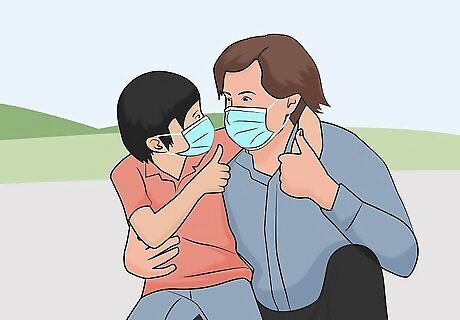
Set a good example by wearing your mask. Your kids look to you when they're trying to figure out how to react to new things. Even if you tell them it's important to wear your mask, if you don't wear yours too, they might not take it very seriously. For instance, if you expect your child to wear a mask when they're in school, you should wear your mask if you walk them to their classroom.
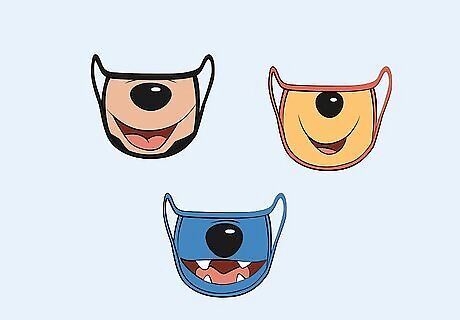
Help your child pick a fun mask. One way to help your child be more excited about their mask is to let them pick one they really like. Search online or check local shops for kid-sized masks in fun colors and patterns, and pick one that your child will love. For instance, you might pick a mask featuring Spiderman or Batman for your DC-obsessed tween. Smaller kids might love brightly-colored masks or masks featuring cartoon characters or animals. If your child is wearing a disposable mask, try adding fun stickers to jazz it up!

Wear the mask for short periods around the house to get used to it. Wearing a mask can feel a little different at first, so it might be a good idea to try it out at home for a while before you go out in public. Start by simply trying the mask on. Then, put it on and wear it for a few minutes while your child plays a favorite game, like peek-a-boo or a video game. Gradually increase the time they have the mask on until you feel confident they'll be able to wear it out. For smaller children, it may help to let them put a mask on their favorite stuffed animal. Be sure to give your child plenty of positive feedback as they're getting used to their mask. For instance, you might say, "Oh my gosh, I've never seen anybody look SO cute with a mask on!"
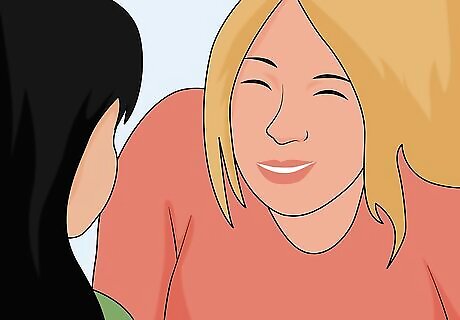
Show your child how to express emotions with their eyes. Some kids might feel anxious about wearing a mask because they feel hidden. They might worry that people won't know if they're smiling, frowning, or angry. You may be able to help alleviate this anxiety by practicing different facial expressions behind the mask. For instance, you might show them how your eyes crinkle when you're smiling, or the way your eyebrows scrunch in if you're mad. Try taking selfies as you practice different expressions! This can help your child feel like the experience is even more fun.













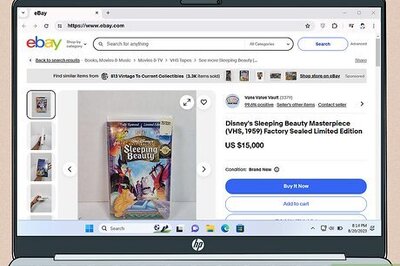

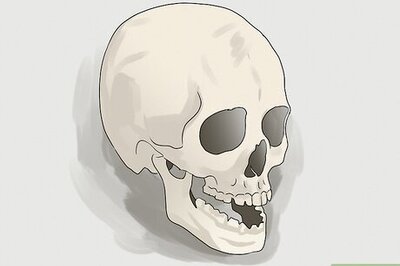
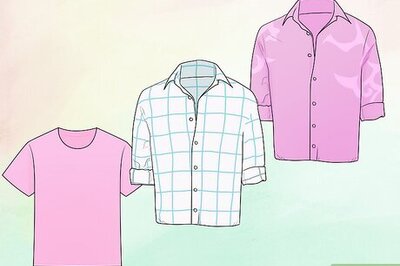
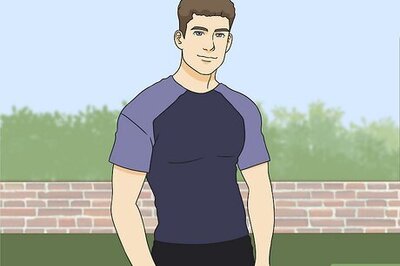
Comments
0 comment